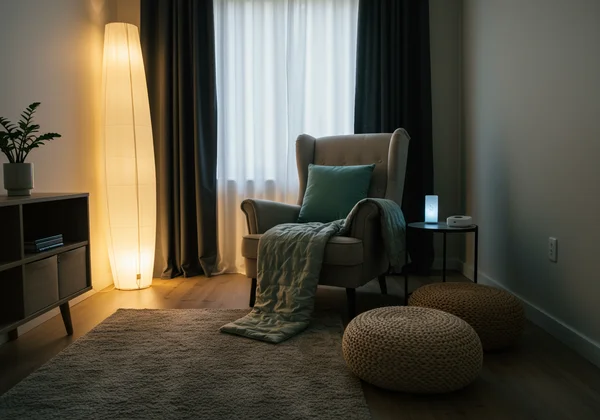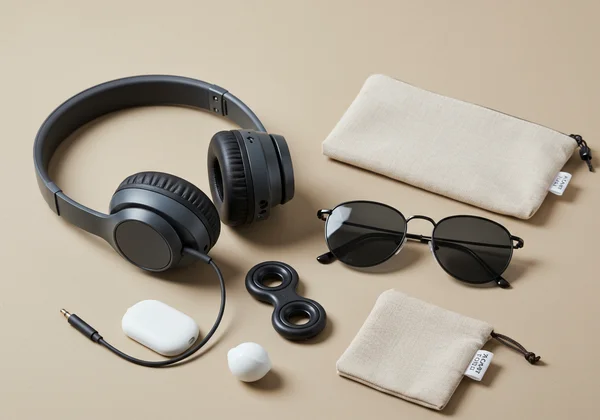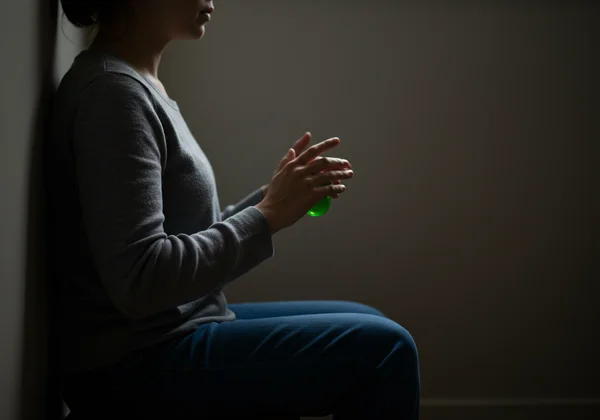Overcome Autistic Sensory Overload: Strategies to Consider Before Your Online Autism Test
Overwhelmed by sounds, lights, or textures? For many autistic adults, sensory overload is a common yet misunderstood aspect of neurodiversity. It can feel like your brain's processing unit is short-circuiting, making everyday environments challenging. Understanding this experience is the first step toward managing it. This guide helps you identify triggers and provides practical strategies to navigate sensory challenges, improving your daily well-being. Gaining self-knowledge through an online autism test can be a powerful starting point.
Understanding Autistic Sensory Issues & Triggers
To manage sensory challenges, it's crucial to understand them. Autistic sensory issues are not a choice but a fundamental difference in how the brain processes information. This can mean being hypersensitive (over-responsive) or hyposensitive (under-responsive) to various senses, often leading to sensory overload when the brain can't cope. Recognizing personal triggers is key to regaining control and creating a more comfortable life.
What Is Sensory Overload in Autism?
Imagine your brain as a traffic controller. In a neurotypical brain, it directs sensory input efficiently. In an autistic brain, the controller is hyper-aware of every detail. When too much input arrives at once—bright lights, loud sounds, strong smells—the intersection becomes gridlocked. This is sensory overload. It can lead to intense anxiety, stress, and physical pain, sometimes resulting in a shutdown or meltdown. Understanding this physiological response with compassion is crucial.

Identifying Your Unique Sensory Triggers
Your sensory profile is unique. What calms one person may overwhelm another. To manage overload, become a detective of your own experiences by keeping a journal. Note when you feel overwhelmed and what was happening around you—fluorescent lights, humming noises, uncomfortable clothing. Over time, you'll see patterns. This process empowers you to anticipate challenges and manage your environment proactively. Taking a preliminary autism screening test can also provide insights into your sensory processing.
Effective Sensory Processing Strategies for Daily Life
Once you understand your triggers, you can implement effective sensory processing strategies. These aren't about avoiding life but modifying your engagement with it to be more manageable. This involves creating supportive environments and developing a toolkit of techniques for public use. This proactive approach can dramatically reduce the frequency and intensity of sensory overload, freeing up energy for what matters to you.
Creating Sensory-Friendly Environments at Home
Your home should be a sanctuary for recharging. Creating a sensory-friendly space is an effective way to prevent burnout. Adjust your lighting by switching harsh fluorescent bulbs for warm, dimmable LEDs and use blackout curtains. For auditory sensitivities, use rugs and soft furnishings to dampen echoes and a white noise machine to mask jarring sounds. Choose soft, natural fabrics for clothing and bedding. A designated quiet corner with a comfortable chair or weighted blanket can be a go-to spot for decompression. Building these autism friendly spaces creates a calming foundation for your nervous system, a practical step after gaining insights from an adult autism test.

Navigating Public Spaces with Sensory Sensitivity
While the outside world is unpredictable, you can navigate it with confidence. Planning is key. Before visiting a new place, look up pictures online. Shop during off-peak hours when it's quieter. A "sensory toolkit" is a lifesaver: include noise-canceling headphones, sunglasses, and a quiet fidget tool. These public sensory tips help you reclaim your freedom to participate in the world on your terms.

Practical Tips for Managing Sensory Overload Responses
Even with good planning, sensory overload can happen. Having immediate, practical techniques helps you navigate the moment without reaching a crisis. These tips focus on calming your nervous system and advocating for your needs in real time. Learning these responses is a powerful form of self-care and a key part of your management strategy.
Quick Calming Techniques for Intense Moments
When overload builds, ground yourself and quickly reduce sensory input. Deep, slow breathing is a powerful tool—focus on longer exhales to activate your relaxation response. If possible, find a quiet space like a restroom for a brief break. Engaging in "stimming" (e.g., rocking, using a fidget toy) is effective for self-regulation. These calming strategies autism provide your brain with predictable, rhythmic input. They are excellent sensory meltdown coping tools.

Proactive Planning & Self-Advocacy
Long-term management requires proactive planning & self-advocacy. Review your weekly schedule to identify potential sensory hotspots and build in recovery time after demanding events. Communicating your needs to trusted friends, family, or colleagues is also crucial. Simple statements like, "I work best in quiet environments," can make a huge difference. Learning to advocate for your needs builds confidence and helps prevent burnout. Understanding your profile through an autism test for adults can give you the language and confidence to articulate these needs.
Empowering Your Sensory Experience: Next Steps
Managing sensory overload is an ongoing journey of self-discovery. By understanding your unique sensory profile, identifying triggers, and building a toolkit of strategies, you can transform your relationship with the world. It's not about changing who you are but creating a life that honors your neurotype.
Remember, awareness is the first step. If you are just beginning to explore these aspects of yourself, a structured tool can be incredibly helpful. We invite you to take our free test on our platform to gain initial insights into your traits. Our platform offers a reliable, science-inspired screening to help you on your path to self-understanding and a more comfortable, fulfilling life.
Frequently Asked Questions About Autistic Sensory Overload
How does sensory overload relate to autism?
Sensory overload is a core feature for many autistic individuals. It stems from differences in how the autistic brain processes sensory information, often leading to hypersensitivity. Everyday stimuli that neurotypical people might filter out can become overwhelming, directly impacting well-being and daily functioning.
Can I manage sensory issues without a formal autism diagnosis?
Absolutely. Strategies for managing sensory issues benefit anyone with sensory sensitivity, regardless of diagnosis. A formal diagnosis isn't a prerequisite for self-care. Tools like a preliminary autism quotient test can provide valuable insights that empower you to implement these strategies effectively.
When should I seek professional help for severe sensory issues?
If sensory issues cause significant distress, interfere with work or relationships, or lead to frequent meltdowns, seek professional help. An occupational therapist specializing in sensory integration can offer tailored strategies. A mental health professional can help with related anxiety and stress. Remember, an online screening is a first step, not a substitute for professional evaluation.
Are there specific tools or products that can help with sensory overload?
Yes, many helpful sensory aids exist. Noise-canceling headphones or earplugs reduce auditory overwhelm. Weighted blankets provide calming deep pressure. Sunglasses can help with light sensitivity, and fidget tools offer a safe outlet for excess energy. Exploring these tools is a key part of building your personal support system.